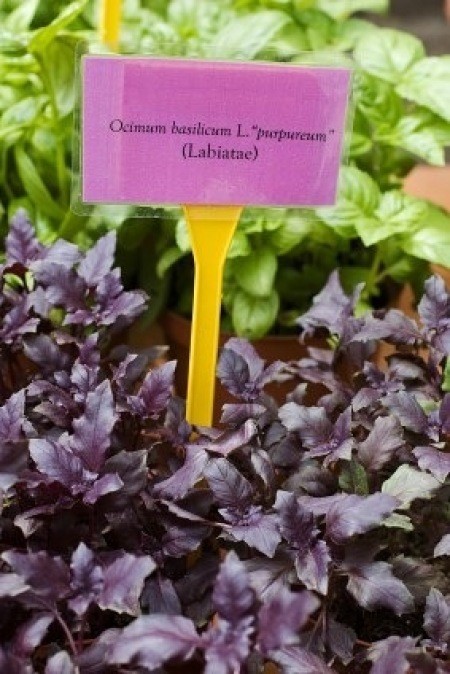
Basil is one of the most popular herbs in the home garden. Known for its strong, peppery flavor (with hints of licorice), and its striking ornamental foliage. Basil is as versatile in the landscape as it is in the kitchen.
Basil is an annual herb that grows well in Zones 4 through 10. Depending on the variety, plants can grow up to 2 feet tall and 8 inches wide. If prevented from flowering, plants will continue to produce leaves and can remain productive for several months.
Site and soil preferences: Basil thrives in heat and full sun. Plant it in any well-drained soil amended with plenty of organic matter. It grows well in both garden beds and containers, and when planted near pepper and tomato plants, it is said to enhance their growth.
Starting seeds indoors: Seeds can be started indoors 6 to 8 weeks before your last expected frost. Plant hardened-off seedlings outdoors after the danger of frost has passed and soil temperature average 50 degrees F or higher. As plants grow, remove flower stalks to maintain the best foliage flavor.
Mulching: Apply compost around the base of seedlings to keep roots warm, retain soil moisture, and discourage weeds. Side-dress with compost again in mid-summer to help enhance production.
Basil can be harvested as soon as the plants have several pairs of leaves. To encourage more branching (and increase your overall harvest), pinch back terminal growth-the point where two branches leave the stem. Continue to remove the flower stalks throughout the season, which divert energy (and flavor) from the plant's leaves. By harvesting leaves weekly, you'll help encourage your plants to produce new growth.
Storage: Leaves harvested for immediate use can be layered between paper towels and placed in resealable plastic bags in the refrigerator. To enjoy basil year round, chop leaves in a food processor and freeze them in ice cube trays with water or a little olive oil. Then when a recipe calls for fresh basil, simply add a cube from the freezer. If you plan to freeze pesto, leave out the garlic until you're ready to use it.
For the best flavor, use basil fresh, rather than dried. The dried leaves don't retain their flavor very well for cooking, but steeping a teaspoonful of dried leaves in a cup of hot water makes a nice "digestive" tea. In the kitchen, basil is great in traditional in Italian, Mediterranean, and Thai dishes, or when used in vinegars and oils.
The hardest part of growing basil may be choosing which type to grow. Varieties differ widely in foliage size, color, aroma, and growth habit. Here are just a few examples:

About The Author: Ellen Brown is an environmental writer and photographer and the owner of Sustainable Media, an environmental media company that specializes in helping businesses and organizations promote eco-friendly products and services. Contact her on the web at http://www.sustainable-media.com
Add your voice! Click below to comment. ThriftyFun is powered by your wisdom!